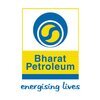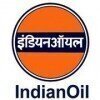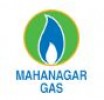Filter interviews by
Mahanagar Gas Management, Technical Interview Questions and Answers
Mahanagar Gas Management, Technical Interview Experiences
1 interview found
Interview Preparation Tips
Experience: Basic questions of your favorite subjects.
Round: HR Interview
Experience: Basic HR questions
General Tips: I think one should not leave this company if it comes in campus recruitment....""Very gud..since it is a Government Company....tension free work enviroment....
College Name: Veermata Jijabai Technological Institute, Mumbai [ VJTI ]
Top trending discussions






Interview questions from similar companies

I applied via Campus Placement and was interviewed before Feb 2023. There were 2 interview rounds.
Normal GD.Just brush up contemporary topics
(2 Questions)
- Q1. Tell me about yourself
- Q2. Mechanical Engineering Technical questions related to refrigeration
Interview Preparation Tips
- Mechanical Engineering
- General knowledge

Assistant Manager Interview Questions & Answers
Indian Oil Corporationposted on 26 Dec 2021
I appeared for an interview before Dec 2020.
Interview Questionnaire
2 Questions
- Q1. Basic questions testing your technical skills
- Q2. Be confident with your answers
Interview Preparation Tips

Graduate Apprentice Trainee Interview Questions & Answers
Bharat Petroleumposted on 24 May 2018
I applied via Company Website and was interviewed in Nov 2017. There were 4 interview rounds.
Interview Preparation Tips
Most of the question ask from power system, control system and signal system.They ask project and summer internship related question.They focus on every point of resume.So prepare for it.
Best of luck.
Skills: Problem Solving, Analytical Skills, Time Management, Decision Making Skills
Duration: 1-4 weeks

Graduate Apprentice Trainee Interview Questions & Answers
Hindustan Petroleumposted on 9 Jun 2021
I applied via Company Website and was interviewed before Jun 2020. There were 3 interview rounds.
Interview Questionnaire
1 Question
- Q1. My final year project related questions & basics questions of my favorite subject power system
Interview Preparation Tips

Graduate Apprentice Trainee Interview Questions & Answers
Bharat Petroleumposted on 24 May 2020
I applied via Company Website and was interviewed in Dec 2019. There were 3 interview rounds.
Interview Questionnaire
2 Questions
- Q1. Your technical and non technical skills
- Ans.
I have strong technical skills in programming and software development, as well as excellent communication and problem-solving abilities.
Proficient in programming languages such as Java, Python, and C++
Experience in software development and testing
Strong analytical and problem-solving skills
Excellent communication and interpersonal abilities
Ability to work well in a team and independently
Familiarity with project manage...
- Q2. Pratical kowldege
Interview Preparation Tips

Graduate Apprentice Trainee Interview Questions & Answers
Bharat Petroleumposted on 3 Jan 2021
I appeared for an interview before Jan 2020.
Interview Questionnaire
1 Question
- Q1. Project related question and basic questions related to interest of area.
Interview Preparation Tips

Graduate Apprentice Trainee Interview Questions & Answers
Bharat Petroleumposted on 12 Apr 2020
I applied via Company Website and was interviewed in Oct 2019. There were 4 interview rounds.
Interview Questionnaire
2 Questions
- Q1. 1-why higher voltage is prefer for transportation ,2-why house wiring use in parallel not in series,3-saftey of transformers,4-doubly excited motor function ,5-neutral and earthing difference,6-kva rating ...
- Ans.
Answers to questions related to electrical engineering.
Higher voltage is preferred for transportation to reduce power loss and increase efficiency.
House wiring is done in parallel to ensure that if one appliance fails, others can still function.
Transformers are designed with safety features such as overcurrent protection and grounding to prevent electrical hazards.
Doubly excited motors are used in applications where hi...
- Q2. Favourite subject
- Ans.
My favourite subject is Mathematics.
I enjoy solving complex problems and equations.
I find it fascinating how mathematical concepts can be applied in various fields.
I have excelled in mathematics throughout my academic career.
I particularly enjoy calculus and statistics.
I believe mathematics is a fundamental subject that helps develop critical thinking skills.
Interview Preparation Tips
2-never nervous mind but cool and confidential thought
3-eye contact perper maintain
4-during give ans technical words use like actually, basically etc
5-some ans not remember give ans sir not remember
6-better topic(subject) choose in which you fill better

Graduate Apprentice Trainee Interview Questions & Answers
Hindustan Petroleumposted on 10 Jul 2021
I applied via Company Website and was interviewed in Jan 2021. There was 1 interview round.
Interview Questionnaire
4 Questions
- Q1. Projects Done and in-depth knowledge about it.
- Q2. About Internship training?
- Q3. Minor technical questions.
- Q4. More questions of HR type.
Interview Preparation Tips

Graduate Apprentice Trainee Interview Questions & Answers
Bharat Petroleumposted on 2 Mar 2022
I applied via Approached by Company and was interviewed before Mar 2021. There were 4 interview rounds.

(5 Questions)
- Q1. Why are you looking for a change?
- Q2. What are your salary expectations?
- Q3. Why should we hire you?
- Q4. What are your strengths and weaknesses?
- Q5. Tell me about yourself.
(1 Question)
- Q1. Electrical Engineering
(1 Question)
- Q1. Electrical Engineering
Interview Preparation Tips
Tell us how to improve this page.
Mahanagar Gas Interviews By Designations
- Mahanagar Gas Project Engineer Interview Questions
- Mahanagar Gas Assistant Manager Interview Questions
- Mahanagar Gas Graduate Apprentice Trainee Interview Questions
- Mahanagar Gas Assistant Project Manager Interview Questions
- Mahanagar Gas Manager Interview Questions
- Mahanagar Gas HSE Engineer Interview Questions
- Mahanagar Gas HR Manager Interview Questions
- Mahanagar Gas Civil Site Engineer Interview Questions
- Show more
Interview Questions from Similar Companies
|
Project Engineer
448
salaries
| ₹3 L/yr - ₹4.5 L/yr |
|
Assistant Manager
205
salaries
| ₹9.5 L/yr - ₹15.3 L/yr |
|
Deputy Manager
94
salaries
| ₹12.7 L/yr - ₹22.6 L/yr |
|
Third Party Engineer
58
salaries
| ₹3.2 L/yr - ₹4 L/yr |
|
Manager
44
salaries
| ₹13.6 L/yr - ₹32 L/yr |

Indian Oil Corporation

Bharat Petroleum

Hindustan Petroleum

GAIL
- Home >
- Interviews >
- Mahanagar Gas Interview Questions













